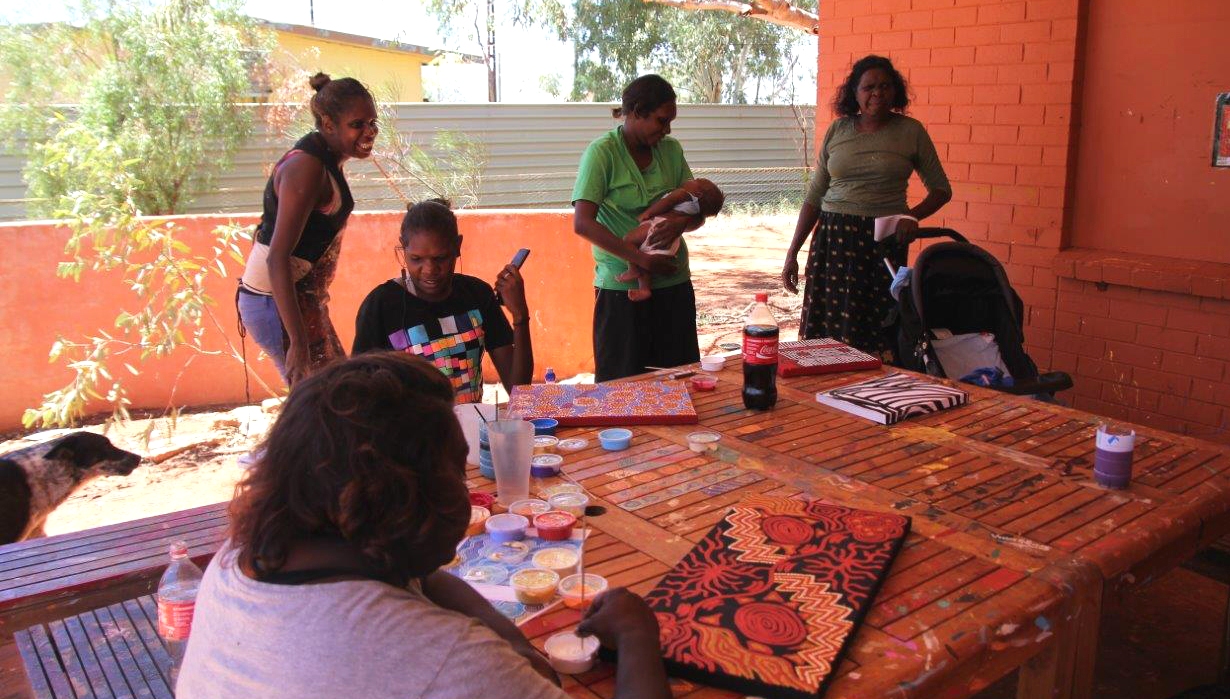The Joys and Challenge of Arts Management at Warlukurlangu Arts
Art Centre management in a remote community is a challenging role. Cecilia Alfonso is the Manager of Warlukurlangu Arts in the desert community of Yuendemu, 300 kilometres north-west of Alice Springs. This art centre is one of the longest-running and most successful Aboriginal-owned art centres in Central Australia. It is the home of artwork from the Warlpiri artists. In this interview, Cecilia talks about the Warlukurlangu Arts, her role and the challenges and adjustments for remote art centre management.
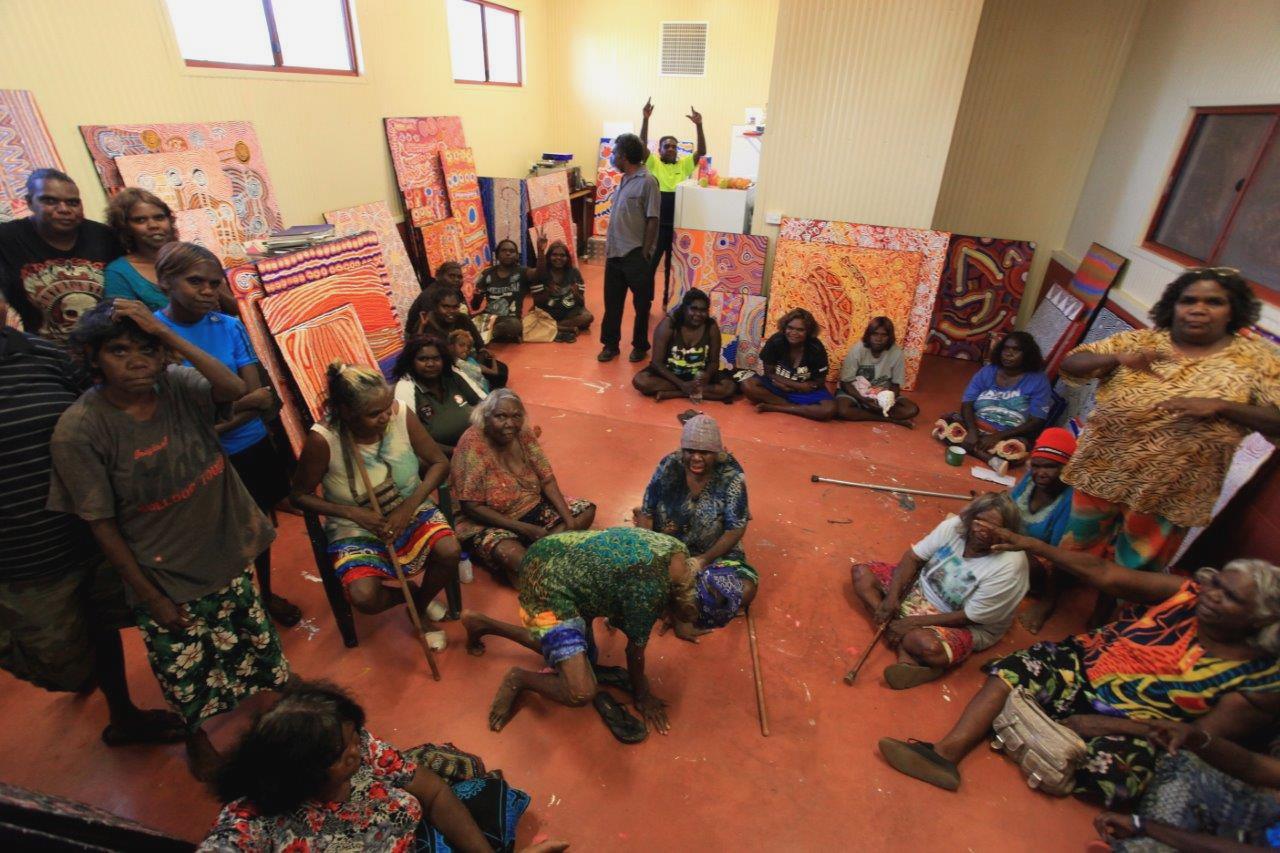
What is the art centre like?
It's changed a lot in the time that I've been there. We've had two building programs but you know we have a very humble building given the size of our business. It is genuinely a place where anybody from the community can feel very comfortable coming to. You don't have to do anything, it is fine to hang around and chat. We make people welcome and there's no pressure. If you do want to create art you get support to do that.
We often get anywhere between 80 to 100 people a day who are working at the art centre in Yuendumu alone. We are still run the programme in Nyirripi for blocks of time. It's not constantly open, but when I've got both programmes going I might have 150 people painting a day.
What are your working conditions like for you?
The job is a very demanding job... it's a very challenging job. It's the sort of job where you have to be sensitive to the cultural differences because you are working in a very different environment culturally. In these environments people are very disadvantaged in lots of ways. There's a lot of health problems. You're required to do a lot of different things. In the course of your day, you might be helping someone out with their medical arrangements, their banking, their social security and trying to run a business at the same time. It's a 24/7 job.
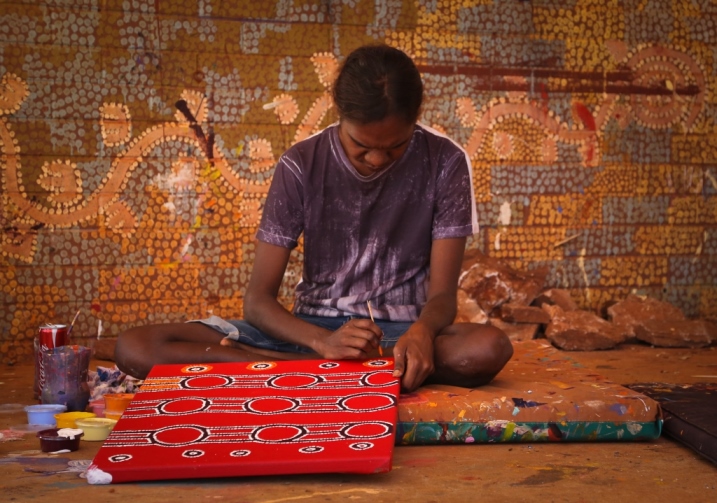
So what changes have you seen in the time in the community?
Things change very gradually. When I started working, I was working with first contact people; they would generally sleep outside of their homes. People have become much more Westernised, slowly.
I'm working with a completely different group of people now; I'm working with the children and grandchildren of the people that I first started working with. Most of them didn't grow up traditionally. Some of them are more literate, more mobile. Many have spent more time in Alice Springs.
I arrived just after people first got telephones in the community. Now everybody is on the internet, everybody has a mobile phone, they're on social media. There's a lot of changes like that.
How is the role of men and women in relation to the art centre?
We have predominately female artists. There is a core group of young men who come and work at the art centre doing jobs every day. We have about six or eight guys that come all the time. There's also a small group of young guys who have just started painting. That's great to see, I knew their grandparents.
I sometimes think about a strategy for engaging more men. That's something that the art centre could do, but we already have so many people and sadly we can't do everything. What I find is that the young men who are turning up are the ones whose grandparents worked at the centre. The chairperson of our board is male so the needs of the men are thought about.
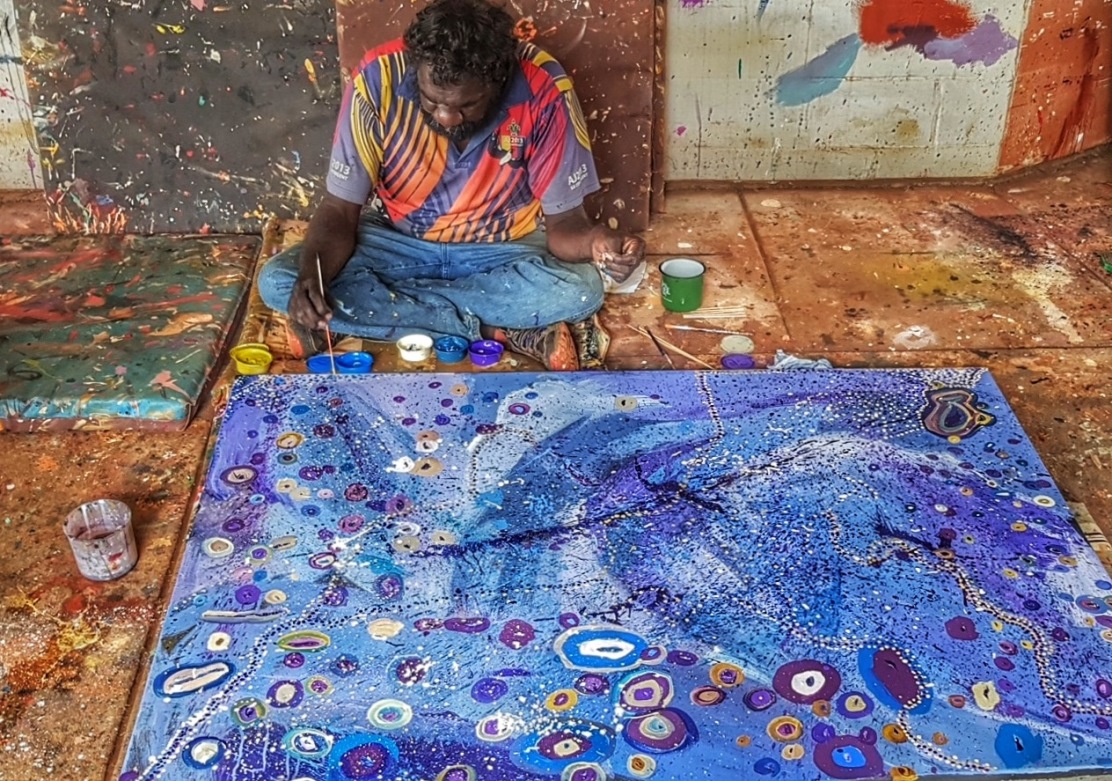
What are the challenges in running an art centre in communities?
I think the greatest challenge is the variety of jobs that you are required to do. It can also be difficult to run a business from a remote environment. Another important factor is that the community members require support on a whole range of different levels that would surprise the average person. Specifically they need help when they are with other organisations.
There is also some challenge around money. The demand for money is huge, and that's fine because people work for money. The way many in our community relate to money and spend their money is different, so that can be very challenging. There's this term that people use for working communities; it's humbug. There's a hierarchy of asking people to do stuff for you and that's different. They have different boundaries around asking you to do things for them. That's also one of the things that makes the job interesting because it is not a nine to five job.
What are the values or priorities of the community?
The people of the community are best placed to answer that question. I can only tell you about what people have told me. I understand that people want housing. Having a home is a priority for them. They want their kids to learn their language. People want to retain their language, and they want to retain their culture. What I observe is that their main priorities are keeping their country and culture and making an income.
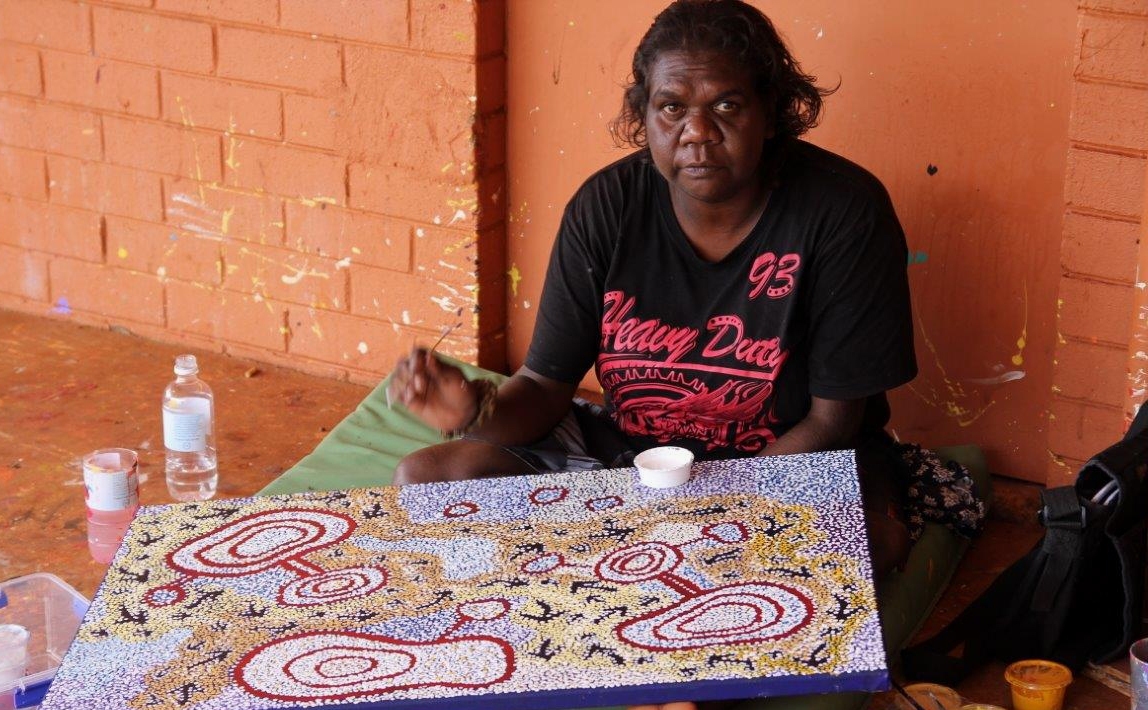
What do you think makes a strong art centre?
An art centre is a really good example of how both cultures can come together in a very positive way. A strong art centre needs a good committee, engaged artists and consistent management. A lot of the art centres have the problem that people burn out after two years. It is unusual to see managers stay in the role for longer than two years. You've got some very strong men and women. For example, in Yirrkala you have Will Stubbs at Buku-Larrnggay Mulka Centre. He's been there for a long time, so it makes for continuity which is so important. There are also good examples of long-term management in the APY Lands.
What are the highlights of the year for the art centre?
It is always a highlight when the artists get to travel; they love the travel. I have a couple of artists going to China this year, so that's probably their favourite thing. We love Desert Mob, you know the Desert Mob exhibition. We attend a lot of art fairs that have sprung up. We attend the Darwin Aboriginal Art Fair, Desert Mob and Tarnanthi. They're really good events where we take the artists and we meet with other art centre workers.
What would be the change that would make the most significant difference for the artists and the art centre?
I don't know that I would want to change anything. The way things are is what makes it successful. I wouldn't want to change them to be more white or change them to be anything like that. We're kind of bouncing off our cultural differences to have the business working.
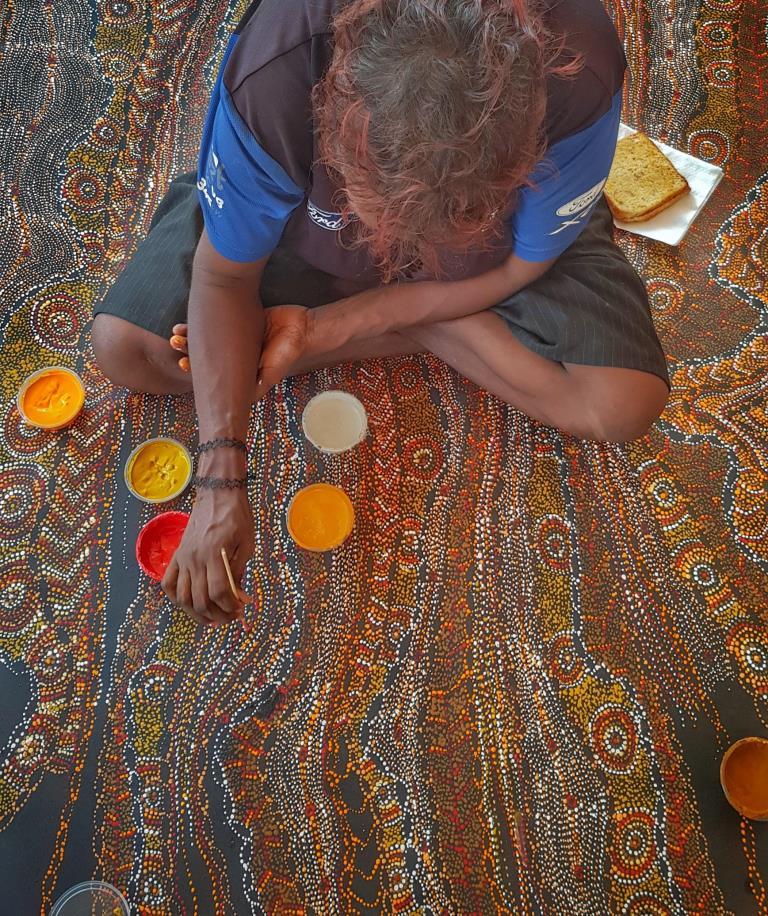
What do you enjoy most about your job?
There's never a dull moment. I enjoy the number of people that I come in to contact with every day and the fact that the job is difficult and varied and challenging.
I think overall this job has given me the opportunity to find skills in myself that I would never have guessed that I have. You're asked to do things that you wouldn't be asked to do in a normal job. So I'm not only selling art, I'm also organising building projects, I'm strategically thinking about two different art centres that are 170 kilometres apart. I'm trying to keep the business staffed and rolling along. I have to think about my staff and I have to think about the artists. You know over the years we've done lots of community projects that are really rewarding. I've had the opportunity to grow and test myself. And it takes a variety, a combination of all those things, I think that's what is amazing about this job. I always wanted to work in the arts.
What do you think the future looks Yuendumu?
The future is whatever they decide to make for themselves. Change takes time. I think that a lot of people forget that it's been such a short amount of time since first white contact in this area. The people were moved in the 1940s and even in the 1950s people were still coming in from the desert.
I always used to say it would be nice to find a third way that respects traditional values and allows the Aboriginal people to live with dignity in the modern world. You can't go back so it would be nice to find some mutually respectful way that works. I think we are still working toward building that new way.
